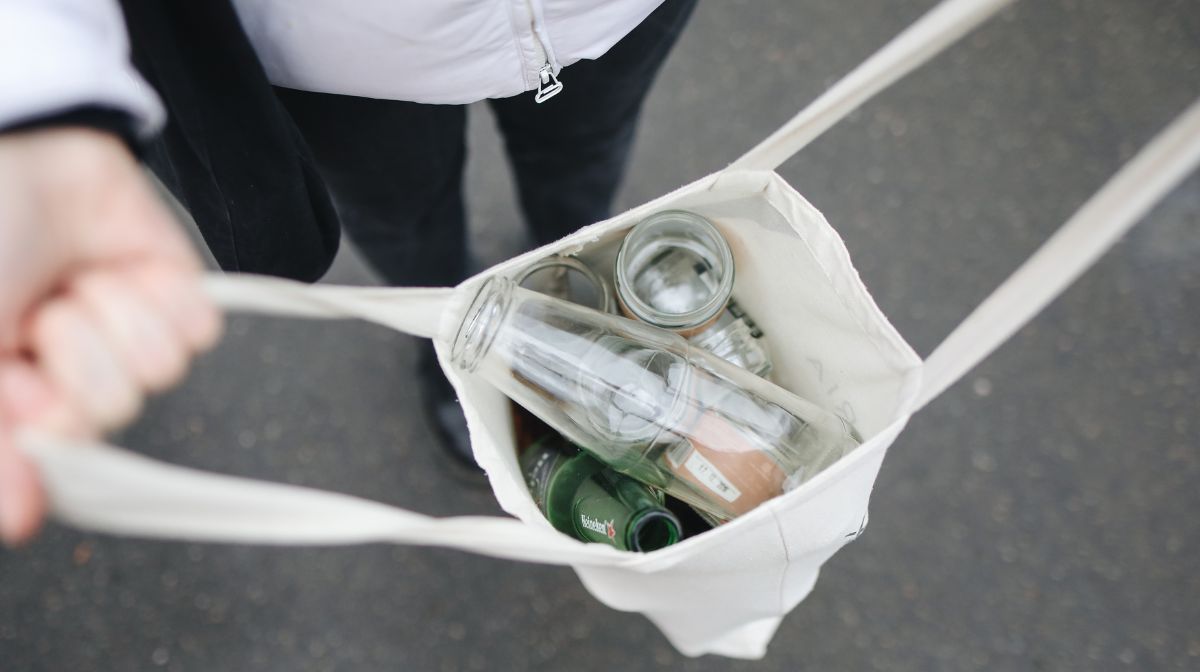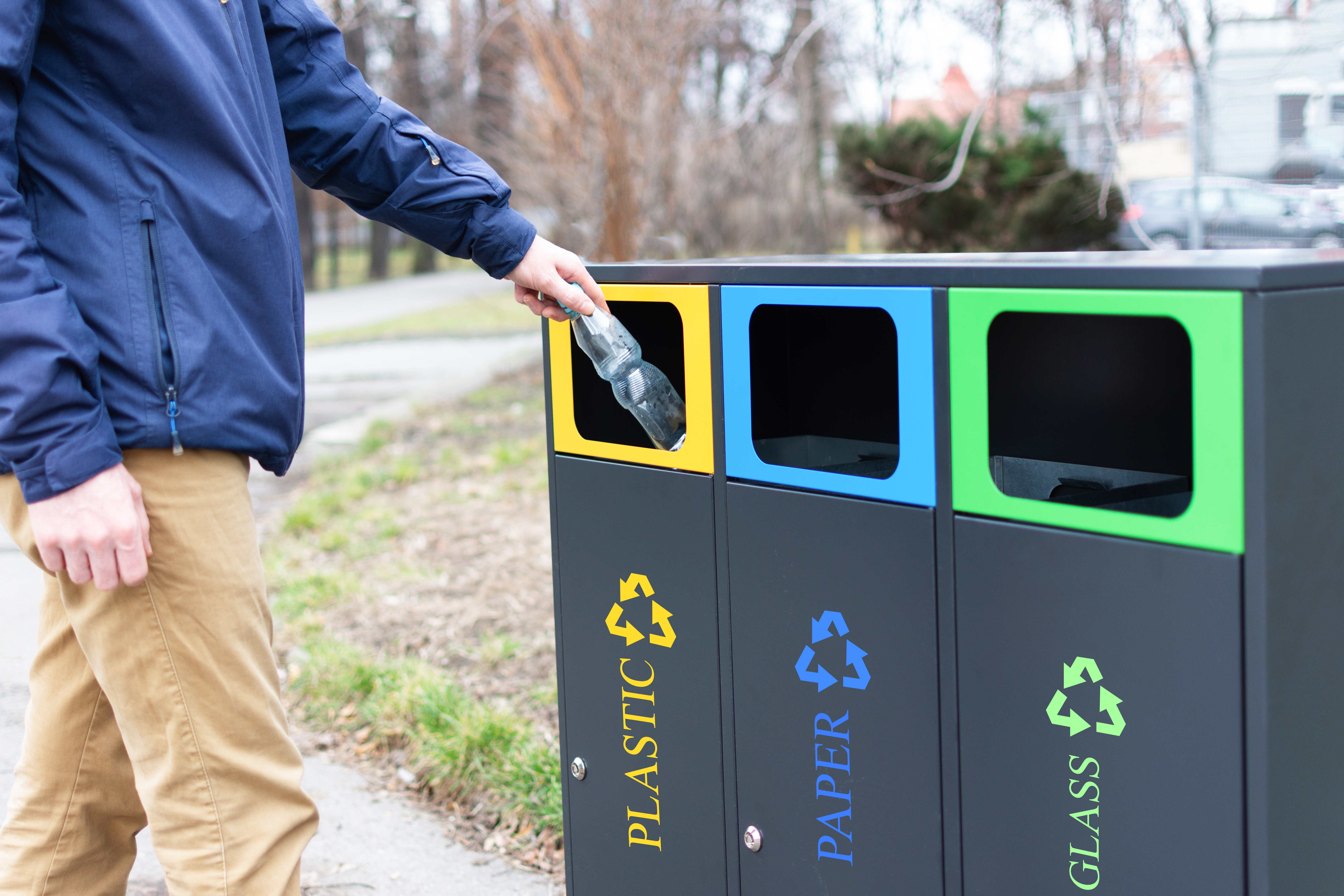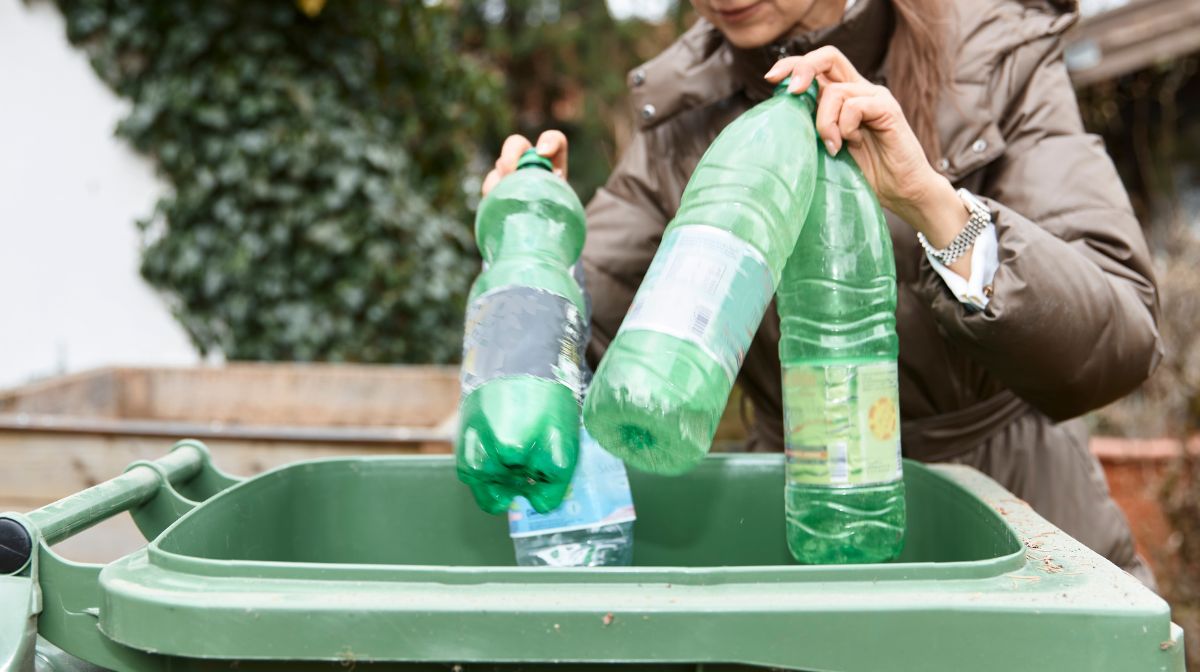Recyclability vs. Sustainability in Packaging

Sustainability and recyclability are related concepts but have different meanings.
Sustainability refers to the ability to maintain or continue a certain level of activity or process over the long term, without depleting natural resources or harming the environment. It means that we should use resources responsibly so that future generations can use them too. Sustainability involves taking into account economic, social, and environmental factors, and balancing them in a way that promotes long-term well-being.
Recyclability, on the other hand, refers to the ability of a material or product to be recycled or reused at the end of its life. It is a specific aspect of sustainability that focuses on reducing waste and conserving resources by diverting materials from landfills and incinerators. Recyclability involves designing products and materials in a way that allows them to be easily taken apart, sorted, and processed into new materials or products.
Sustainability is a broader concept that encompasses environmental, social, and economic considerations, while recyclability is a specific aspect of sustainability that focuses on reducing waste and conserving resources through the reuse and recycling of materials.

What is recyclability in packaging?
Recyclability is the ability for packaging materials to be collected, sorted, processed, and turned into new products through recycling. A packaging material is considered recyclable if it can be recovered and reused or reprocessed into new products or packaging materials after its initial use.
Recyclability is an important aspect of sustainable packaging because it helps reduce the amount of waste sent to landfills and conserves natural resources by promoting the use of recycled materials in the production of new items.
Designing packaging with recyclability in mind includes proper sorting and disposal by consumers. Recycling relies heavily on making sure the same materials are sorted together. It is a challenge for consumers to take the extra step of disassembling packages composed of mixed materials, like a plastic pump with a metal spring, which is necessary for each material to be correctly recycled. As the preference for recyclable and sustainable packaging increases, manufacturers are adopting new techniques to meet demands, like all-plastic pumps, including plastic springs, to make recycling easier for consumers.
The benefits of packaging recyclability include reducing the amount of waste sent to landfills, promoting the use of recycled materials, and contributing to a more sustainable future. Designing packaging with recyclability in mind can also help companies meet environmental goals and consumer demand for eco-friendly products.
The types of packaging that can be recycled depend on the availability of local recycling facilities. It is important to check local recycling guidelines to determine which specific types of packaging can be recycled in a given location. Look for a number on the bottom of plastic containers to identify the numbers that can be recycled. Common recyclable materials are paper, cardboard, glass, aluminum, steel, and some plastics.
Recyclable packaging has limitations that include contamination from non-recyclable materials, difficulty in sorting and processing, and limited end-market demand for recycled materials. Some types of packaging may be difficult or costly to recycle, and not all areas have access to recycling infrastructure, which limits recycling options.

What is sustainability in packaging?
Sustainable packaging aims to minimize environmental impact and create a more sustainable future through the use of renewable or recycled materials, lightweight and efficient design, as well as waste and emissions reduction. It seeks to balance economic, environmental, and social factors while meeting consumer and stakeholder needs.
Sustainable packaging materials can reduce waste, conserve resources, and support a circular economy. It’s important to consider their environmental impact throughout their entire lifecycle, including production, transportation, and disposal. Examples of sustainable packaging materials include paper/cardboard, bioplastics, glass, metal, recycled plastic, and reusable packaging like glass jars and metal tins.
Sustainable packaging benefits beyond recyclability
The benefits of sustainability include protecting natural resources and ecosystems, reducing waste and emissions, improving social and economic equity, and promoting long-term economic and environmental stability. Sustainable practices can help mitigate the impacts of climate change and support a more resilient and equitable society for all. Additional benefits beyond recyclability include:
-
Reduced environmental impact: Sustainable packaging materials and design practices can help reduce the use of natural resources, energy consumption, greenhouse gas emissions, and waste generation throughout the entire lifecycle of the packaging.
-
Improved brand image and consumer loyalty: Companies that prioritize sustainable packaging can enhance their brand image and reputation by appealing to environmentally conscious consumers who value sustainable products and practices.
-
Increased efficiency and cost savings: Sustainable packaging design can lead to reduced material usage, improved shipping efficiency, and lower transportation costs, generating cost savings and improved operational efficiency.
-
Meeting regulatory requirements: Many governments and regulatory bodies are implementing regulations and requirements for sustainable packaging, and adopting sustainable packaging practices can help companies comply with these regulations and avoid potential fines or penalties.
-
Supporting a circular economy: Sustainable packaging can contribute to a more circular economy by promoting the use of renewable resources, reducing waste, and promoting the reuse and recycling of materials.

Key differences between recyclable and sustainable packaging
As we mentioned above, recyclability and sustainability are related concepts, but they have some key differences in the context of packaging.
Material sourcing and renewability
Recyclable packaging is designed to be reused or reprocessed after disposal, reducing waste and conserving resources. However, the raw materials used in recyclable packaging may not be sustainable or renewable. In contrast, sustainable packaging focuses on using materials that are responsibly sourced and renewable, such as bamboo, cornstarch, or other plant-based materials. These materials can be grown and harvested without depleting natural resources or harming the environment. While recyclable packaging helps reduce waste, sustainable packaging takes a more holistic approach to environmental impact by considering the entire life cycle of the packaging material.
End-of-life considerations
Recyclable and sustainable packaging differ in their end-of-life considerations. Recyclable packaging can be processed to make new products, but not all recyclable packaging is recycled and materials can degrade over time limiting the number of times a package can be recycled. Sustainable packaging is designed to minimize waste and pollution throughout its life cycle and aims to create a circular economy by using materials that are biodegradable, compostable, or reusable.
Environmental impact throughout the lifecycle
The environmental impact of a package depends on its entire lifecycle, from sourcing raw materials to end-of-life disposal or recycling. At each stage of the lifecycle, there are potential environmental impacts to consider.
During the production of the packaging material, there may be environmental impacts associated with the extraction and processing of raw materials. Once the packaging has been produced and used, there are potential impacts associated with its disposal or recycling. If the packaging is sent to a landfill, it may contribute to the generation of methane, a potent greenhouse gas. If the packaging is recycled, it can help to conserve resources and reduce waste. However, there are also environmental impacts associated with the collection, sorting, and processing of recycling materials, which can require energy and produce greenhouse gas emissions.
For example, glass is often considered a sustainable packaging material, but its production and recycling processes can generate significant energy use and greenhouse gas emissions. Additionally, most glass production occurs overseas, leading to further transportation emissions. To minimize the environmental impact, reusing glass packaging in daily life through upcycling is a more sustainable option than relying solely on recycling.
The environmental impact of a package depends on a range of factors, including the material used, the method of production, the end-of-life management strategy, and the effectiveness of the recycling system. To reduce the environmental impact of packaging, it’s essential to consider the entire lifecycle of the package and adopt a holistic approach that takes into account the environmental impact of all stages of the lifecycle.
Cost considerations
There are several cost considerations associated with recyclable and sustainable packaging.
First, the cost of the material itself may be higher for sustainable or recycled materials compared to traditional materials because the materials often require more processing or are sourced from more expensive materials. Biodegradable plastics made from plant-based materials, for instance, may be more expensive than those made from fossil fuels. However, increased demand for sustainable materials may bring down costs over time.
Second, the cost of implementing sustainable or recyclable packaging practices may be higher in the short term. This includes costs associated with the research and development of new materials, design and testing of new packaging, and equipment upgrades to support recycling programs. However, these costs may be offset by longer-term cost savings, such as reduced waste disposal costs and improved brand reputation.
Third, the cost of implementing sustainable packaging practices may also vary depending on the location and regulatory environment. For example, some countries may have stricter regulations around packaging waste, which could offset the cost of implementing sustainable practices. Some countries also offer tax incentives or other forms of financial support for sustainable packaging initiatives.
Overall, the cost considerations associated with sustainable and recyclable packaging can be complex and depend on a variety of factors. While sustainable packaging may involve higher costs in the short term, it can also offer long-term cost savings and environmental benefits. Therefore, businesses should carefully evaluate the costs and benefits of sustainable packaging to determine the best approach for their specific needs and goals.
Customer perception and demand
As the demand for sustainable packaging grows, it is necessary to establish a clear strategy for incorporating sustainability into our daily lives. The phenomenon of “greenwashing,” where products falsely claim to be sustainable, undermines the values of a circular economy. It is the responsibility of both businesses and consumers to prioritize environmental sustainability. This may entail disassembling packaging to recycle its components properly or consciously making an effort to reuse glass packaging containers.

How does recycling relate to sustainable packaging?
Recycling is an important aspect of sustainable packaging because it helps to reduce waste, conserve resources, and minimize environmental impact. When packaging materials are recycled, they can be turned into new products without the need for additional raw materials or energy-intensive production processes. This can help to reduce greenhouse gas emissions and conserve natural resources.
Recycling is also closely related to the concept of a circular economy, which aims to reduce waste and promote the reuse and recycling of materials. In a circular economy, waste is seen as a resource that can be repurposed or recycled, rather than something to be discarded. By promoting the recycling of packaging materials, we can create a more circular economy and reduce the amount of waste sent to landfills.
It’s important to note that recycling alone is not enough to achieve sustainable packaging. While recycling can help to conserve resources and reduce waste, it doesn’t address the environmental impacts of the production and disposal of packaging materials. To achieve truly sustainable packaging, we need to adopt a holistic approach that takes into account the entire lifecycle of the packaging, from raw materials extraction to disposal or recycling.
Recycling plays an important role in sustainable packaging by promoting resource conservation, waste reduction, and a circular economy. However, it’s just one piece of the puzzle, and we need to consider a range of factors, including material selection, design, and end-of-life management, to achieve truly sustainable packaging.

Challenges with implementing recyclable sustainable packaging
Although recyclable and sustainable packaging has significant benefits, there are still challenges in implementing these practices. The lack of infrastructure for collection and processing of recyclable materials is a major challenge that leads to lower rates of recycling and increased waste sent to landfills. Another challenge is the availability and cost of sustainable materials which can have limitations on performance or availability. There is also the need for consumer education and behavior change to properly recycle and dispose of these materials. Sustainable recycling is an eco-friendly approach to solid waste management that promotes a sustainable society by conserving natural resources and reducing harm to the environment, compared to the potentially harmful disposable methods currently in use. Coordination between manufacturers, governments, and consumers is needed to address these challenges and create a more sustainable future for packaging.

Challenges with plastic recycling
Plastics with lower resin codes are easier to recycle than those with higher codes. However, many plastics are not recycled due to their composition. Examples of non-recyclable plastics include bioplastics and plastic-coated wrapping paper. Businesses should consult waste management providers to determine which plastics can be recycled.
Plastic recycling is challenging because there are millions of different plastic products and packages, which vary in composition, color, transparency, weight, and size. Clear plastics have the highest material value in the recycled materials market, while colored and opaque plastics have lower market value and can be considered contaminants in the recycling stream. This is because dyed and pigmented plastics have a much lower market value and can limit the flexibility of the recycling process. For this reason, some recycling facilities dispose of certain pigmented plastics instead of recycling them. Brands should consider the pigment and translucence of their bottles and containers to ensure they can be properly recycled.
Plastic waste that is not recycled is typically sent to landfills, but it can also be repurposed or reused to prolong its lifespan. Finding alternatives to landfill and recognizing the value of plastic waste are important considerations for reducing environmental impact.

Sustainable Packaging Options from Paramount Global
Paramount Global provides sustainable packaging solutions for a diverse range of industries, including aerospace, automotive, food and beverage, pet care, pharmaceutical, industrial chemicals, household products, personal care, and paints and coatings. With a proud history dating back to 1976, we have been a trusted partner for businesses in bringing their products to market. Our commitment to delivering innovative packaging solutions and personalized customer service enables us to establish lasting partnerships with our clients. Contact us today to learn more about our sustainable packaging solutions and how we can partner with you.
Hayley is a marketing professional and copywriter with a background in crafting content for a diverse range of industries. She has been writing about packaging and supply chain logistics for Paramount Global since 2022. She specializes in explaining complex topics in a clear and engaging way and is an advocate for sustainability in packaging and supply chain management.
For over forty years, Paramount has been delivering perfectly integrated packaging and supply chain solutions.
